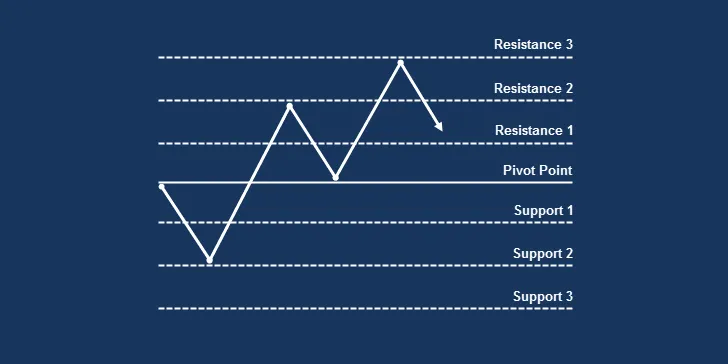
Pivot points are a vestige of the days before electronic trading that were calculated manually in the past by floor traders. Pivot points are still a key element of technical analysis to many traders today and many pivot point strategies exist to take advantage of these important horizontal support and resistance levels.
In this article, I’m going to explain how pivot points are calculated and show you 3 profitable pivot point strategies that you can use to take advantage of them.
How Are Pivot Points Calculated?
The pivot point (P) itself is simply an average of the high, low, and closing price of the previous day, week, or month (typically the previous day).
P = (High + Low + Close) / 3
The first resistance (R1) and support (S1) levels from the pivot point can be calculated by multiplying the pivot point by 2 and subtracting the Low or High respectively.
R1 = (2 x P) – Low
S1 = (2 x P) – High
The second resistance (R2) and support (S2) levels are calculated subtracting the Low from the High and adding or subtracting the result to/from the pivot point.
R2 = P + (High – Low)
S2 = P – (High – Low)
Finally, the third resistance (R3) and support (S3) levels are calculated by subtracting the Low from the pivot point, multiplying by 2, and then adding the High or subtracting the pivot point from the High, multiplying by 2, and subtracting then subtracting the Low.
R3 = High + 2(P – Low)
S3 = Low – 2(High – P)
If all of this seems a little overwhelming to you, don’t worry – there are pivot point calculators available online. Better yet, there are indicators for your trading platform that do the calculations automatically, like this pivot point indicator for MT4.
3 Profitable Pivot Point Strategies for Forex Traders
Below are 3 profitable pivot point strategies. The examples are geared toward Forex traders but these techniques work in other markets as well.
In these examples, I’m using candlestick trading techniques as entry triggers. Other trading techniques that take advantage of trends and reversals, like divergence trading, will also work well with these pivot point strategies.
Note: Like any strategy, pivot points may not always line up with other indicators or trading signals that you’re combining them with. However, when you do get a confluence of signals along with a pivot point signal, these can be very powerful.
Pivot Point Bounce Strategy
The pivot point bounce is a classic trading strategy. The idea is that if price is above the pivot point, the market sentiment is bullish. If price is below the pivot point, the market sentiment is bearish.
The pivot point bounce takes advantage of market sentiment, buying or selling if price retraces back to the pivot point (which is historically a good horizontal support or resistance level).
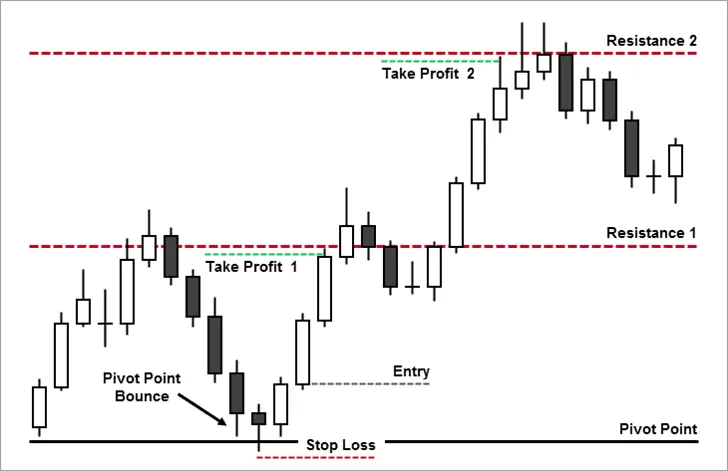
Note: In the example above, I used a morning star, which is a strong bullish candlestick pattern, as my entry signal.
Pivot Point Trend Trading Strategy
You can also use pivot points and the various support and resistance levels calculated from them for trend trading. The idea is to take advantage of retracements at significant levels after price has chosen a direction based on the pivot point.
If price breaks through the first support or resistance level convincingly, and then retraces, you can buy or sell the bounce off of that resistance level.
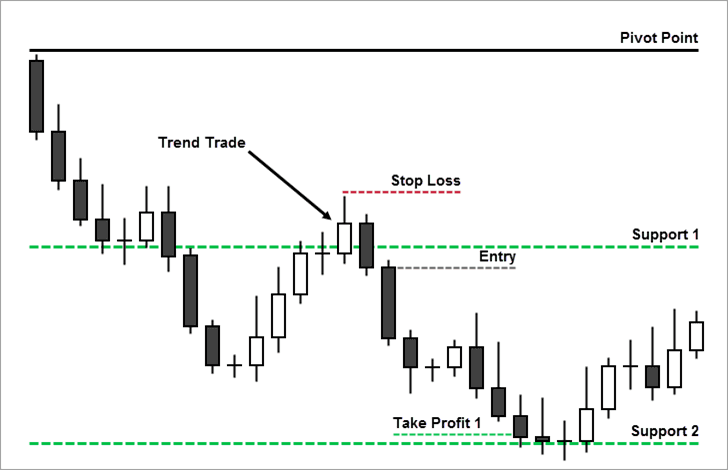
Note: In the example above, I used a bearish engulfing pattern, which is a strong bearish candlestick pattern, as my entry signal.
Pivot Point Reversal Strategy
Pivot point support and resistance levels can also be good places to take reversal trades. If price is showing signs of slowing down near the second or third support or resistance levels, these can be good places to buy or sell respectively – especially if these levels line up with previous market structure.
The idea is that, at support or resistance levels 1 and 2, price is likely to be extended. Since these levels are also typically good horizontal support and resistance levels they are great areas to look for reversal trades.
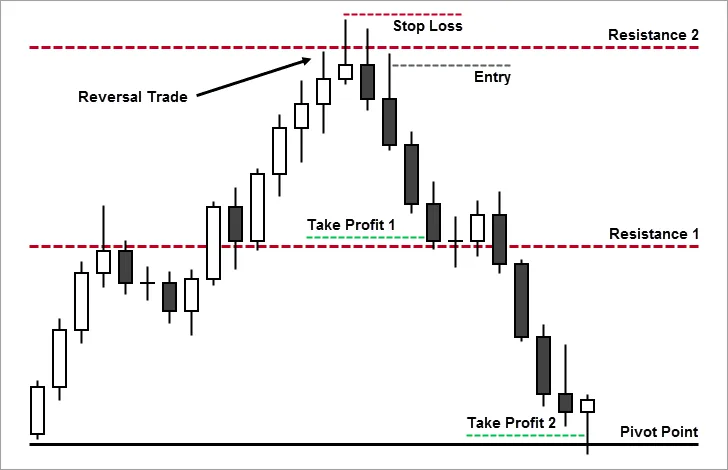
Note: In the example above, I used a shooting star with a confirmation candle (which is how I prefer to trade them) as my entry signal. The confirmation candle was a strong bearish candlestick that closed in the lower 1/3rd of its range. The entry was taken when price pulled back to the standard entry point.
Final Thoughts
These 3 pivot point strategies are just a few of the many pivot point strategies that traders use to take advantage of these strong horizontal support and resistance levels. In fact, regardless of which trading strategies you use, pivot points can be a strong addition – especially for intraday trading.
Each level of your pivot point calculations can be significant on their own. However, these levels are particularly powerful when they line up with previous structure (support and resistance levels) in the market.
I don’t recommend trading pivot points alone, but adding these pivot point strategies to your other technical trading systems or combining them with fundamental analysis can work very well.
I hope you enjoyed these 3 profitable pivot point strategies. Be sure to backtest and demo trade any new strategies before live trading them. If you have any questions about these strategies or would like to suggest others, please leave a comment below.


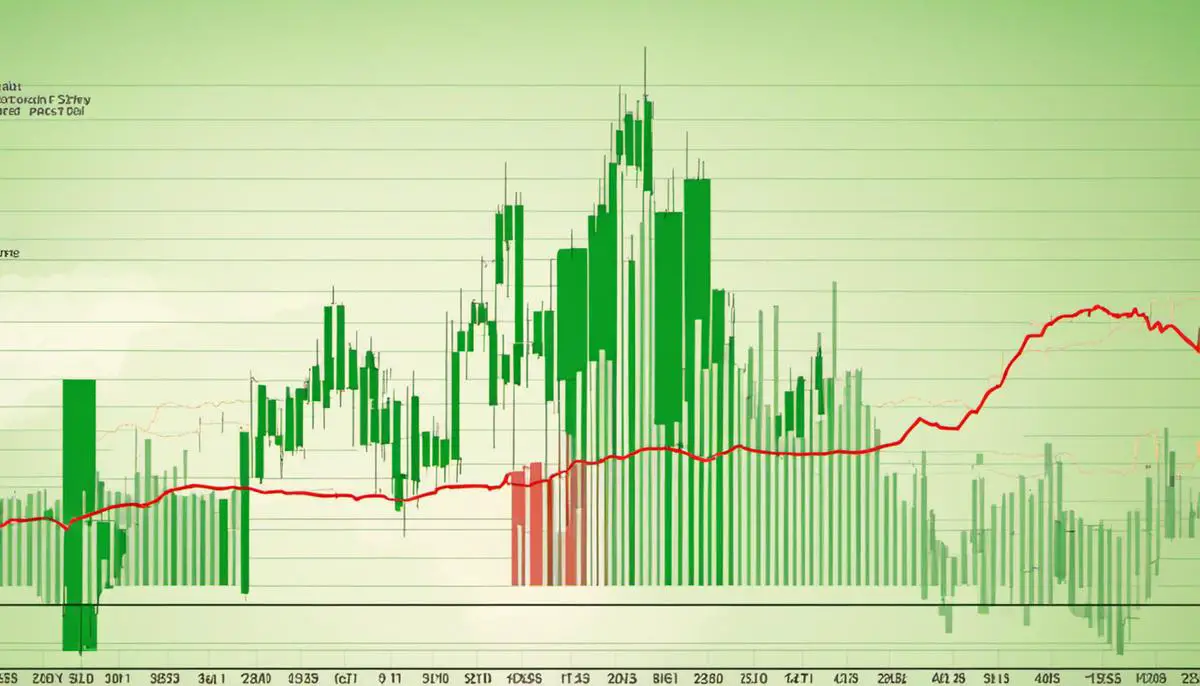
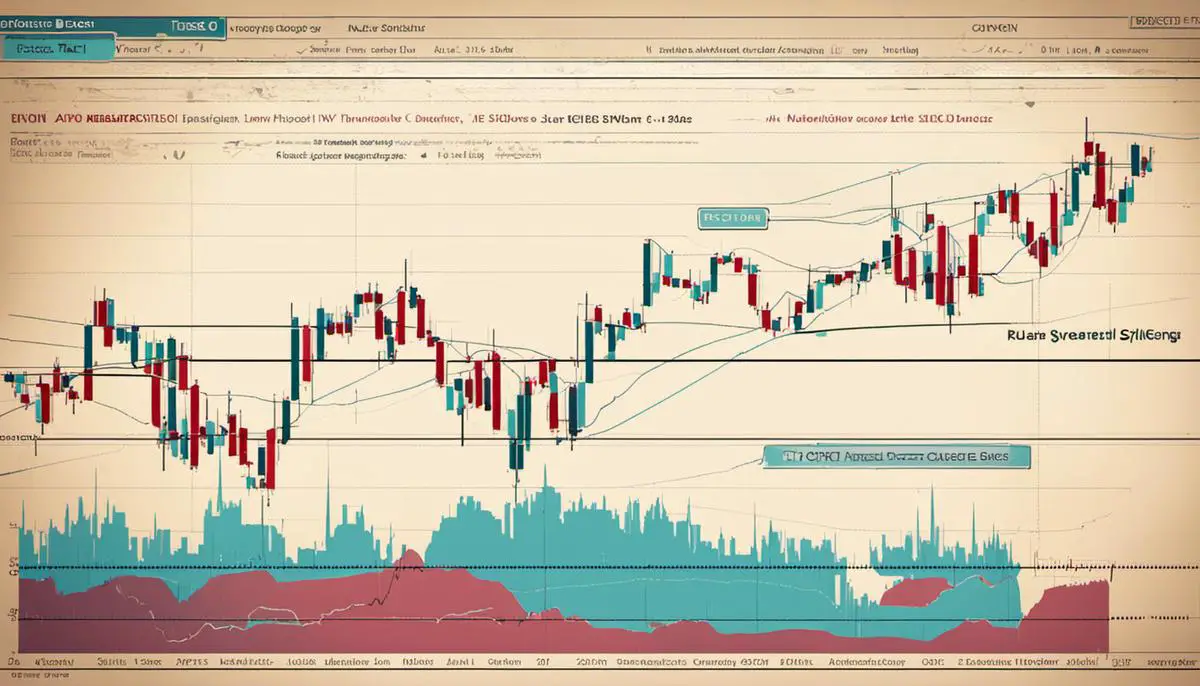
Hi sorry to comment this in a pretty random place, but I couldn’t find any contact details.
I read your review on DTFL, personally I do work full time, 9-5 but I do have access to my phone so I can use MT4 during this time, to a reasonable extent. I was just wondering if you think it would suit me?
Hey Myles,
No problem. I used to have a contact form on the site but I got a lot of spam, so I got rid of it. You can always contact me on Facebook or by leaving a comment as you have.
To answer your question, I would recommend DTFL to any Forex trader that is looking for a profitable trading system, as long as you can check your charts and adjust the levels that we trade stop runs from throughout the London or NY session.
If you do decide to go with DTFL, you might want to look into the DTFL Pro EA. It’s designed to automatically trade the system based on your inputs before the session starts.
There are pros and cons to it, but some of the guys at DTFL are using it with success.
If I were in your shoes, especially considering how good mobile charting is these days, I don’t think I’d have a problem trading DTFL successfully.
Hi Chris – thanks for the notes on Pivot Point strategies. I now understand the benefits of PP’s and trading tactics a whole lot better.
Warm regards from South Africa
Sylvester
Hello again, Sylvester. Thanks for the comment. I’m glad you’re finding this site useful.
Hi Chris, Thank for your insight on these strategies. May I know which time frame will you base these on? Is there a significant difference between LTF vs HTF as the R and S are all the same no matter which TF we are using. I see it as either getting in early or late and thus also the SL being more or less.
I trade on 15M to 1D time frames. Everything is more significant on the higher time frames. Plus, the spread is a smaller percentage of the trade cost on higher time frames.
Traders generally trade the lower time frames to get more trade opportunities. The exception is trading systems like Day Trading Forex Live, where we use the 15M time frame to get a more detailed look at how the smart money is moving the market.
That being said, if the market is going to move as you predict, you will typically get a better buy or sell point on the lower time frames, like you mentioned.
Many thanks for sharing Chris. Much appreciate it.
No problem. Thanks for reading.
Chris,
What a book. Well done. Loving it.
Do you wait for price action signal before entering a trade?
Thanks for the kind words, Anthony. When you say “book” are you referring to my free eBook or just my general long-windedness? lol
Most of the trading that I do today is with the Day Trading Forex Live system. It’s relatively easy and I like the returns versus the time I have to put into it. That being said, even DTFL uses a proprietary price action entry called the “confirmation close”.
If DTFL weren’t an option, I would be trading candlesticks patterns with other qualifying indicators, where I would use my favorite candlestick signals and patterns as entry triggers.
I hope that answers your question. Thanks for reading and good luck!
thank you Chris for the Pivot Point strategies. The Pivot point Reversal strategy proves to work best for me
Thanks for reading, Molefi. I’m glad you found these strategies useful.
Hello Chris ,
Have you ever tested on which time frame the pivot points are the most accurate.
I usualy trade daily, 4hrs 1hrs.
Thank to share,,,, Robert
Hello Robert,
Using the daily pivot points, it’s probably best to trade on a 15-minute chart (or something around that). If you’re going to trade the daily charts, you need to use weekly pivot points.